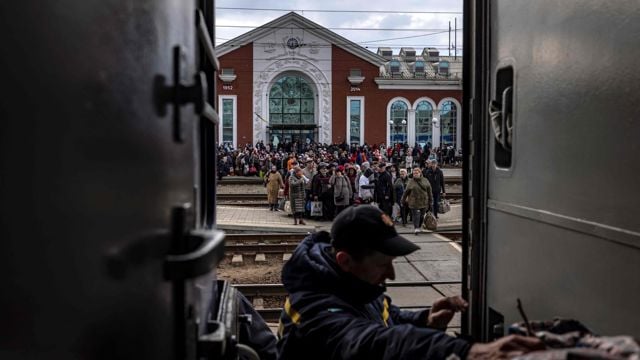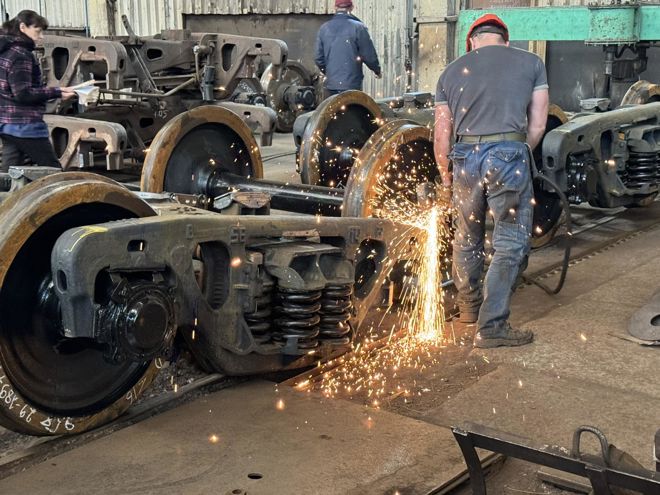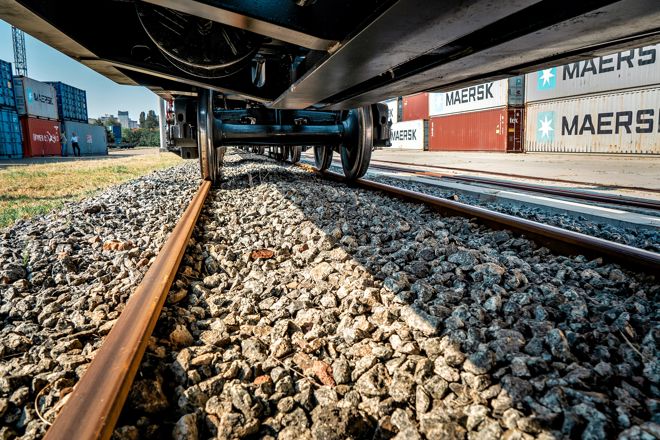The lifeline through Ukraine: Railways save lives and keep the country running

Families wait to board a train at Kramatorsk central station as they flee the eastern city of Kramatorsk, in the Donbass region, on April 5, 2022
When Ukraine’s airspace was closed, the railway system became a vital lifeline for both people and goods. Norway is contributing to the repair and modernization of Ukraine’s railway system through the World Bank’s URTF fund, ensuring transport, trade, and reconstruction continue.
Ukraine’s railways have always been a key part of the country’s transport network, but after the invasion led to airspace closure, they became absolutely essential. Trains have helped evacuate millions of people, delivered food and humanitarian aid, and kept Ukrainian grain exports moving to global markets. Rebuilding and modernizing the railway network is not just a necessity — it’s an investment in the country’s future.
Repairing damaged tracks three times faster
Norway is the largest contributor to the World Bank’s Ukraine Relief, Recovery, Reconstruction and Reform Trust Fund (URTF), providing NOK 6.6 billion in support.
URTF is a flexible, multi-donor fund covering critical needs in Ukraine, including energy, healthcare, education, and infrastructure. Norway’s contribution ensures these funds are used strategically to support Ukraine’s recovery and long-term development.
One of the key projects under URTF is RELINC (Repairing Essential Logistics Infrastructure and Network Connectivity), which focuses on rebuilding and modernizing Ukraine’s railway system. This is crucial for maintaining transport and supply chains both during the war and in the country’s reconstruction.
Through RELINC, Norway has helped provide essential railway equipment, including 18 modular bridges and nearly 90 specialized vehicles and machines. This support has enabled Ukraine to repair damaged tracks and bridges three times faster than before.

The project also funds critical railway infrastructure, such as:
- Repairing over 500 km of damaged railway tracks and rebuilding 126 destroyed railway stations.
- Upgrading equipment and technology to create a more efficient and sustainable transport system.
- Increasing export capacity for grain and other goods to global markets.
Building bridges to Europe
Ukraine is modernizing its railway network to meet European standards. As part of this effort, a new railway line with European gauge (1435 mm) is being built from Chop to Uzhhorod. Set to open in 2025, this line will provide Ukraine with a direct connection to the European railway network, strengthening trade and transport links with the EU.
Chop, a major railway hub near the Slovakian and Hungarian borders, already serves as a key junction between Ukraine’s broad-gauge railway system and Europe’s standard-gauge network. Uzhhorod, the capital of Zakarpattia Oblast, plays a significant role in regional trade and transport and will become even more important with this new link.

Norway’s long-term commitment to modernization
Norway’s involvement in URTF is part of the broader Nansen Programme for Ukraine, which supports the country’s path toward stability and growth. By investing in the railway sector, Norway is ensuring that Ukraine can not only manage the current crisis but also build a more resilient and future-oriented transport system.
The results stories on the webpage of the Nansen Support Programme for Ukraine are based on texts produced and shared by the civilian and humanitarian partners of the programme. The stories represent a snapshot of the results achieved to showcase the difference the Norwegian support is making. Read more stories.